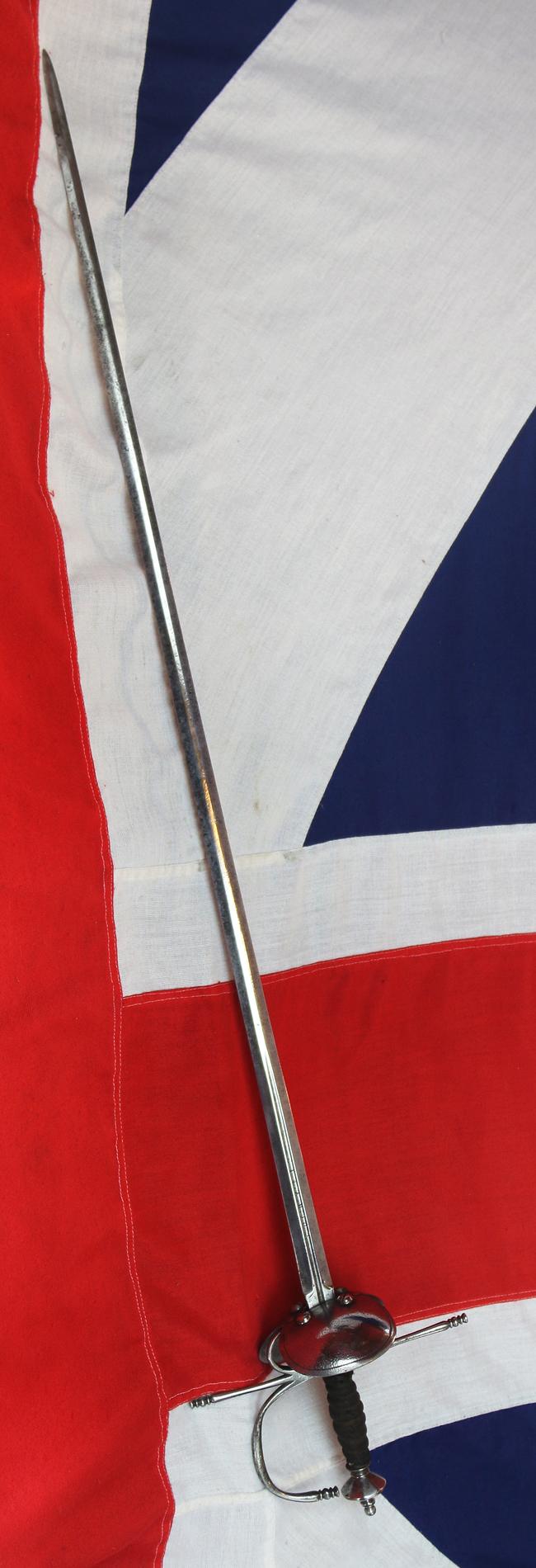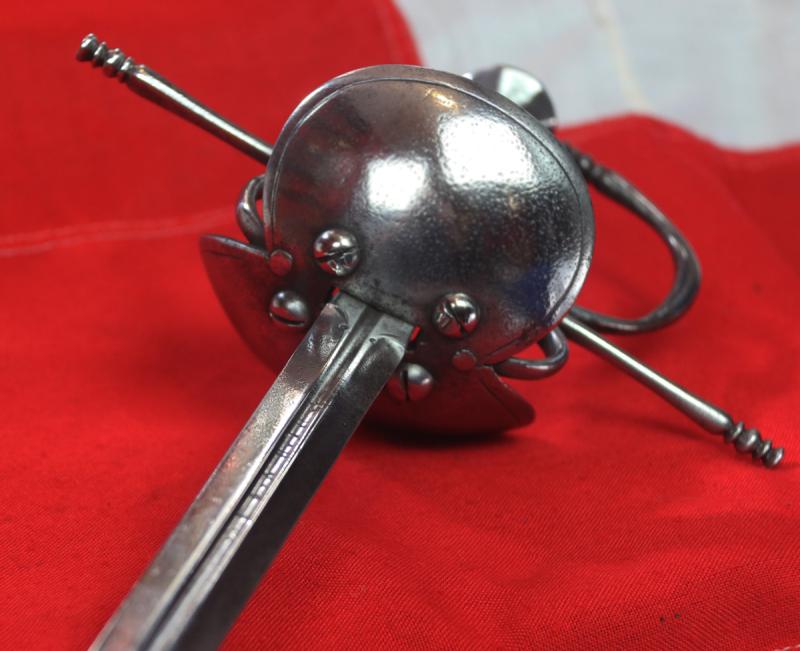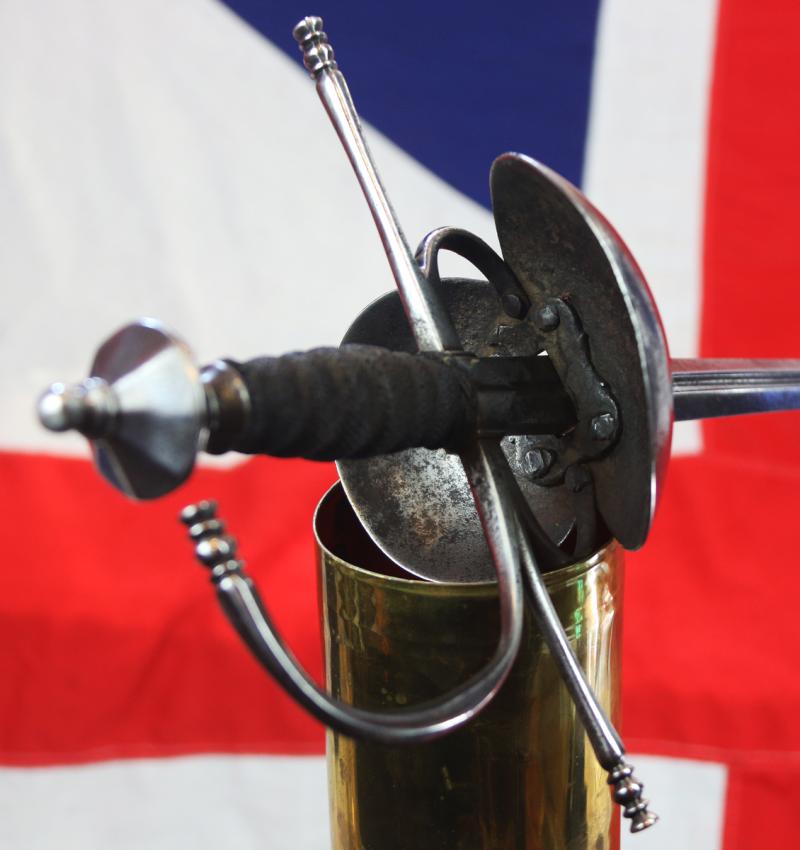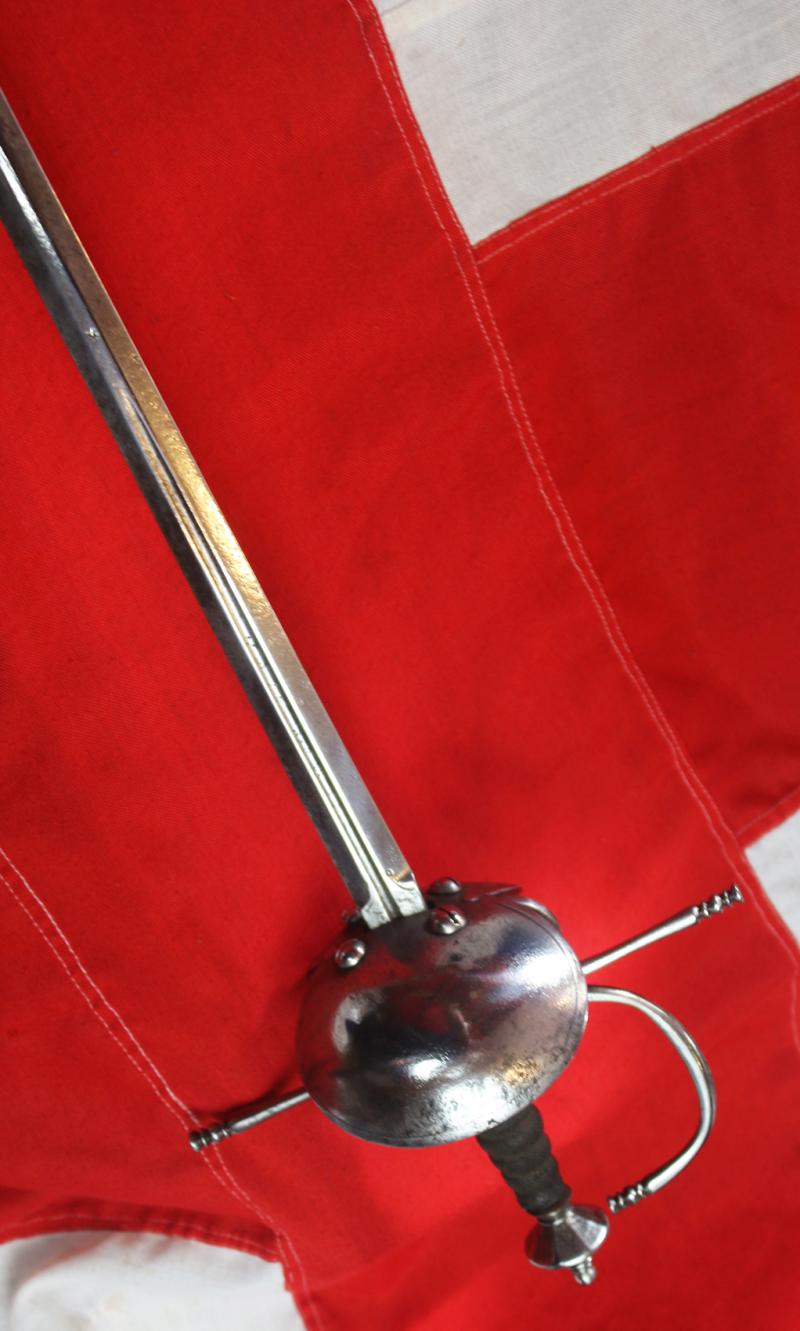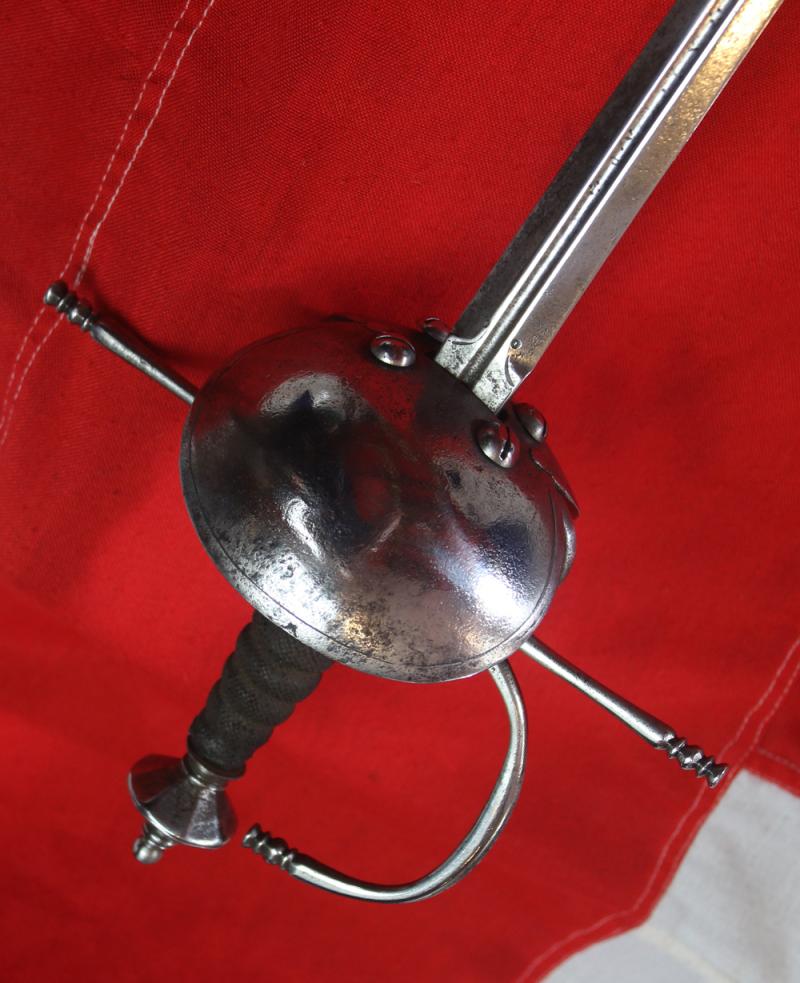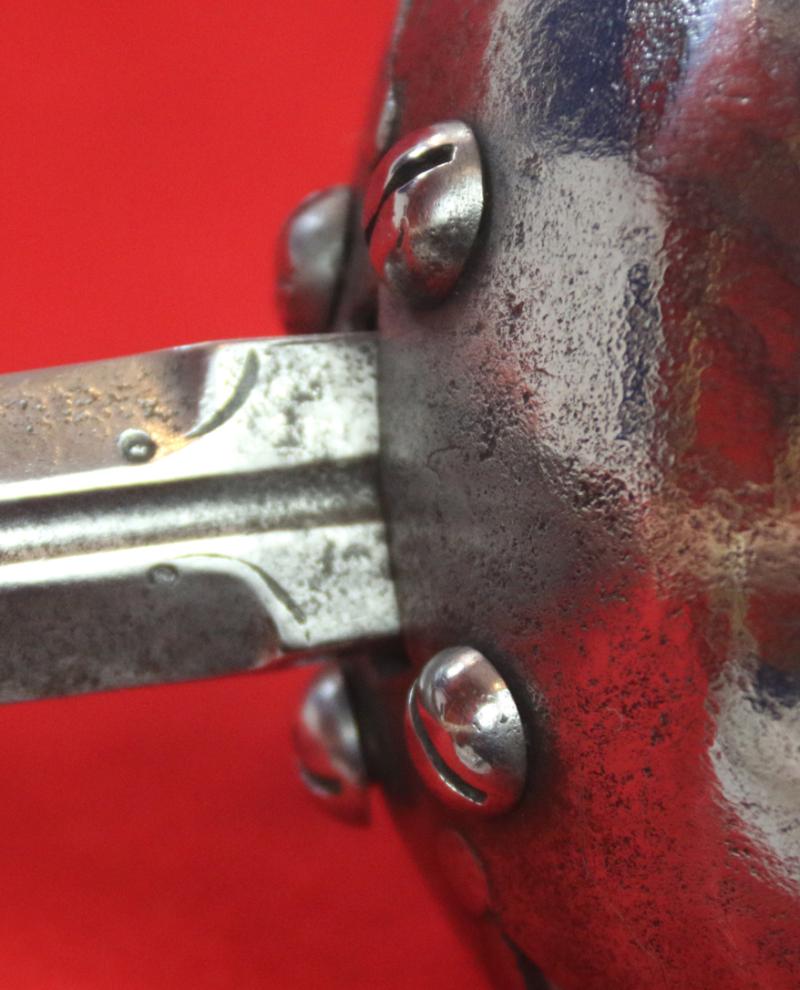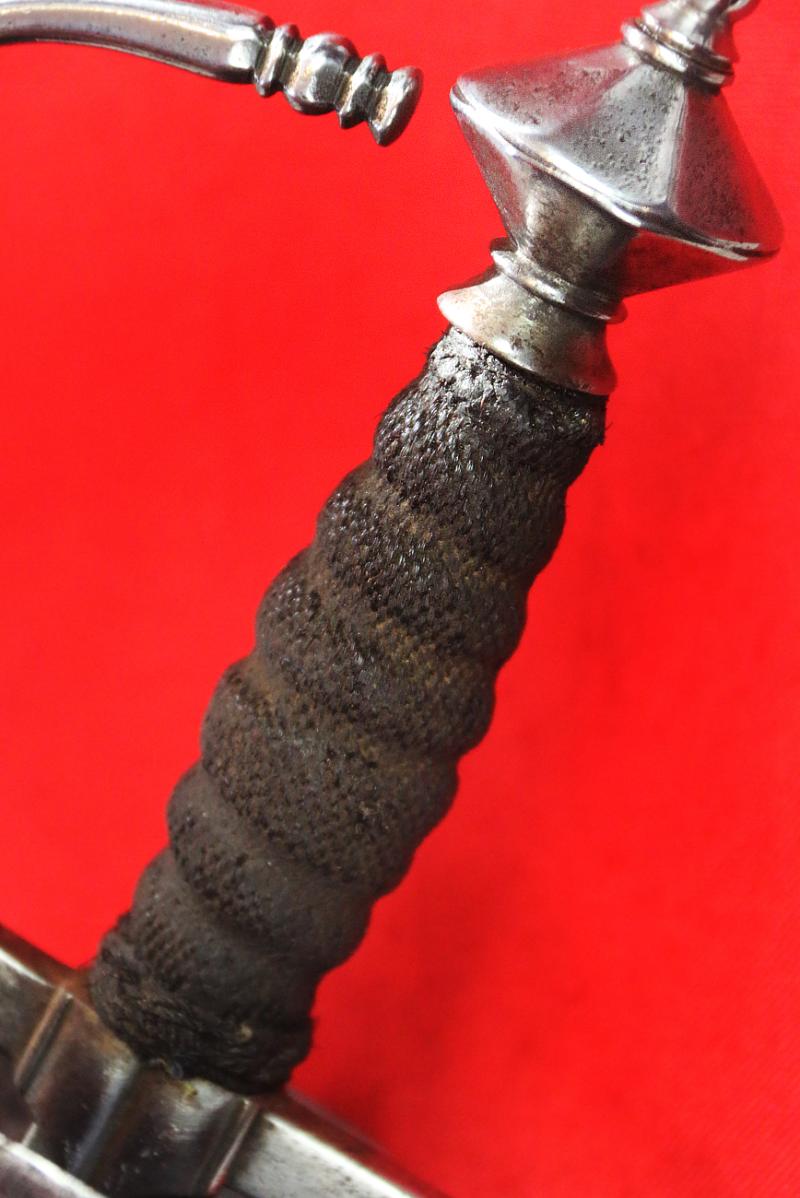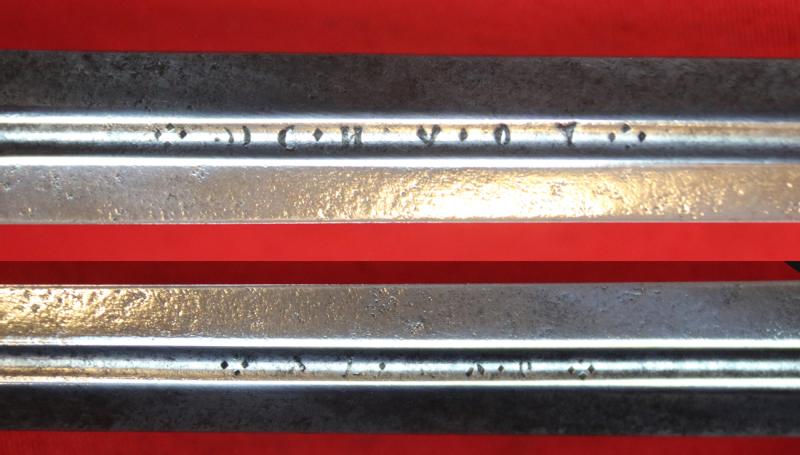A Superb Spanish Cup Hilt Rapier Circa 1660. Double Shell Asymmetrical Hilt Guard With Long Crossguard, Octohedral Double Conical Pommel & Large Pas Dans
Highly complex geometric woven plaited steel wire bound spiral twist grip. Long single fullered blade double edged and graduating to a fine point, with armourers marks and text within the fuller.
The rapier was the principal civilian sidearm throughout the sixteenth and seventeenth centuries. Designed for cut-and-thrust combat of progressively complex techniques, the rapier is characterised by a double-edged blade with an acute point and an elaborate guard for the hand. The guards, usually of iron or steel, were subject to a variety of embellishment. In Spain swords of this form were often categorized as Bilbo as the steel was exported from Bilbao
The term comes from the Basque city of Bilbao, Bilbo in Basque where the metal (bilbo steel) was extracted and later sent to Toledo, a city in the centre of the Iberian peninsula, where these swords were forged and many exported to the New World of 17th century America.
The espada ropera of the 16th century was a cut-and-thrust civilian weapon for self-defense and the duel, while earlier weapons were equally at home on the battlefield. Throughout the 16th century, a variety of new, single-handed civilian weapons were being developed. In 1570, the Italian master Rocco Bonetti first settled in England advocating the use of the rapier for thrusting as opposed to cutting or slashing when engaged in a duel.citation needed Nevertheless, the English word "rapier" generally refers to a primarily thrusting weapon, developed by the year 1600 as a result of the geometrical theories of such masters as Camillo Agrippa, Ridolfo Capo Ferro, and Vincentio Saviolo.citation needed
The rapier became extremely fashionable throughout Europe with the wealthier classes, but was not without its detractors. Some people, such as George Silver, disapproved of its technical potential and the dueling use to which it was put.1516
Allowing for fast reactions, and with a long reach, the rapier was well suited to civilian combat in the 16th and 17th centuries. As military-style cutting and thrusting swords continued to evolve to meet needs on the battlefield, the rapier continued to evolve to meet the needs of civilian combat and decorum, eventually becoming lighter, shorter and less cumbersome to wear. This is when the rapier began to give way to the colichemarde, which was itself later superseded by the small sword which was later superseded by the épée. Noticeably, there were some "war rapiers" that feature a relatively wide blade mounted on a typical rapier hilt during this era. These hybrid swords were used in the military, even on the battlefield. The sword carried by King Gustavus Adolphus in the Thirty Years' War is a typical example of the "war rapier".
By the year 1715, the rapier had been largely replaced by the lighter small sword throughout most of Europe, although the former continued to be used, as evidenced by the treatises of Donald McBane (1728), P. J. F. Girard (1736) and Domenico Angelo (1787). The rapier is still used today by officers of the Swiss Guard of the pope
36.5 inch blade overall 44 inches, excellent condition for age
Every item is accompanied with our unique, Certificate of Authenticity. Of course any certificate of authenticity, given by even the best specialist dealers, in any field, all around the world, is simply a piece of paper,…however, ours is backed up with the fact we are the largest dealers of our kind in the world, with over 100 years and four generation’s of professional trading experience behind us
Code: 24940
3650.00 GBP

